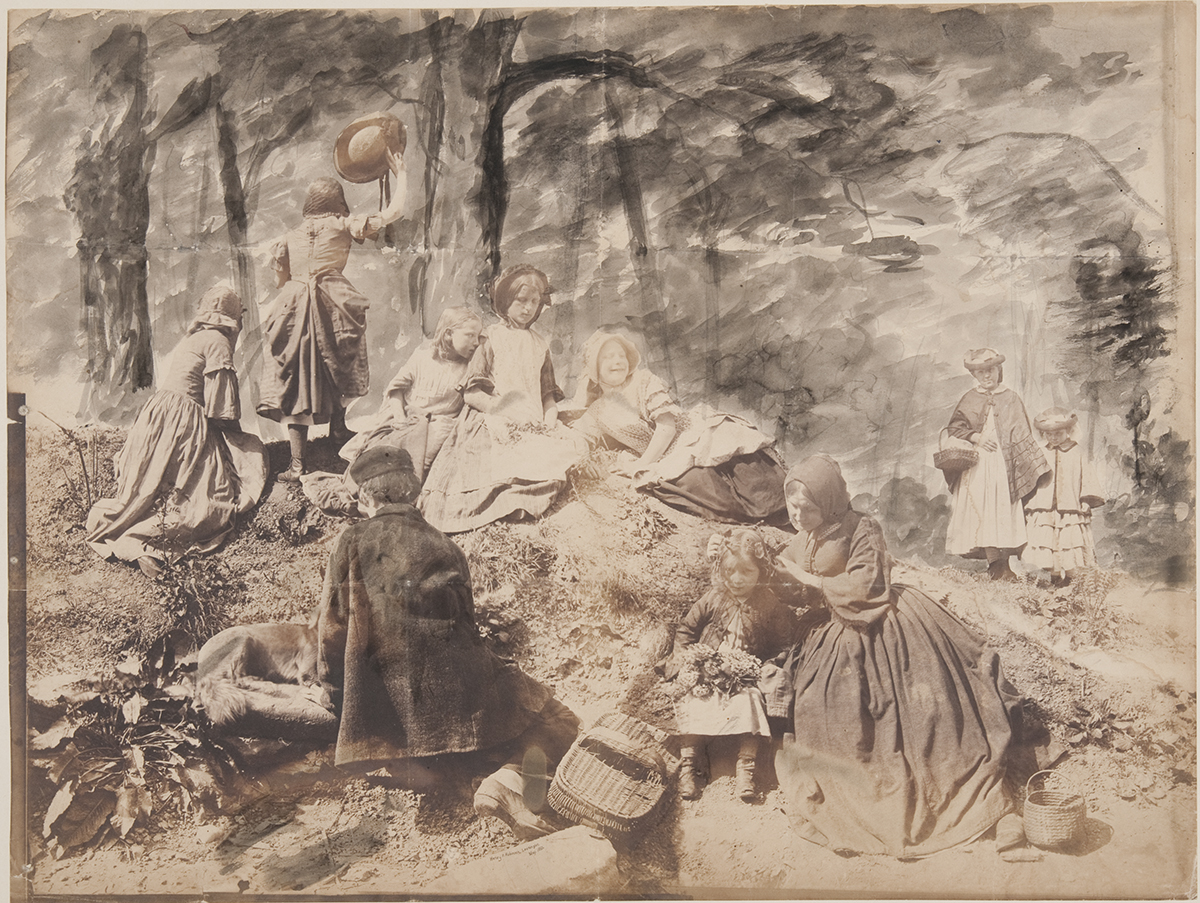Emily Talbot, a Ph.D. candidate at the University of Michigan, received a dissertation fellowship to study nineteenth-century composite photographs by Henry Peach Robinson and his contemporaries in England and France. This research forms part of a larger project that considers the integration of photographic technologies and aesthetic standards into the production of works of art in other media. The Ransom Center is celebrating the 25th anniversary of its fellowship program in 2014–2015.
With the support of a Dissertation Fellowship at the Harry Ransom Center, I spent a month studying photographs, drawings, and other ephemera related to nineteenth-century British photographer Henry Peach Robinson (1830–1901). My dissertation project at the University of Michigan concerns relationships between photography and other media in the nineteenth century, focusing particularly on “hybrid” practices, such as painters who utilized photographic technologies or photographers who doctored their images with paint or pencil.
Robinson is a perfect case study for my project as he was one of the first and most famous practitioners of “composite photography,” an early form of photomontage that involved printing multiple negatives on the same sheet of paper. Composite prints are ambitious works of art that were intended to rival painting in their subject matter and mode of execution. Typically, Robinson would design his compositions in pencil or watercolor, later photographing each figure and landscape element separately before combining them into a single image in the darkroom.
The Helmut and Alison Gernsheim collection of photography at the Ransom Center is one of three major repositories of work by Henry Peach Robinson (the other two being George Eastman House in Rochester, New York and the National Media Museum in Bradford, England). However, because Helmut Gernsheim felt that it was important to understand a photographer’s artistic development in its entirety—an idea he notes in correspondence with Robinson’s granddaughter—the Gernsheims collected Robinson’s prints, drawings, and paintings in addition to the photographs for which he is best known. During my residency at the Ransom Center, I was particularly keen to study several rare photographic collages that Robinson made as preliminary studies for his composite prints. These half-painted, half-photographic compositions reveal Robinson’s artistic process to be a fascinating negotiation of painting and photography, imagination, and visible reality.
In my attempts to understand how Robinson conceived and created his pictures, I called upon the expertise of Barbara Brown, Head of Photograph Conservation at the Ransom Center. Together we examined 15 combination photographs, identifying and speculating about instances of handwork on the negatives as a result of painting on or masking over parts of the image before printing. During this study session I gained further appreciation for the complexity of Robinson’s technique. By making changes directly on his negatives, he left very little physical evidence of this manipulation on the prints themselves. Without being able to consult the negatives, the viewer must often guess how the image was made.
Rather than being an impediment to my research, this knowledge helps me to understand why many nineteenth-century art critics were so disapproving of composite printing. Landscape photographer Alfred Wall even described Robinson’s works as “ingenious fraud” and “contemptible shams.” Composite pictures trick the eye—the critic’s main tool of expertise—casting doubt on the reliability of photographic images and undermining the role of the critic altogether. As I move forward with my research, I intend to explore further this fraught relationship between seeing and making that is exemplified by the rich collections of nineteenth-century photography at the Harry Ransom Center.
Image: Henry Peach Robinson, Study for A Holiday in the Wood, salted paper print with applied graphite and watercolor, May 1860.
